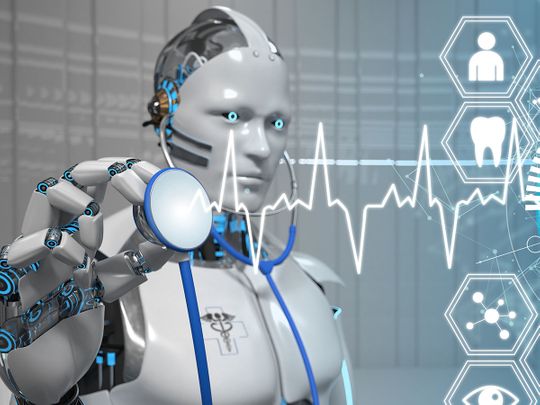
AI has been playing a critical role in industries for decades, but has only recently begun to take a leading role in healthcare. As longevity increases, healthcare systems are facing growing demand for their services, rising costs and a workforce struggling to meet the needs of patients.
Demand is driven by a combination of unstoppable forces – an aging population, changing patient expectations, a shift in lifestyle choices, and the never-ending cycle of innovation. Of these, the implications from an aging population stand out. Managing aging patients with complex needs is expensive and requires systems to shift from an episodic care-based philosophy to one more proactive and focused on long-term care management.
Healthcare spending is simply not keeping up. Without major structural and transformational change, healthcare systems will struggle to remain sustainable. Health systems also need a larger workforce, but although the global economy could create 40 million new health-sector jobs by 2030, there is still a projected shortfall of 9.9 million physicians, nurses and midwives over the same period, according to the World Health Organisation.
As healthcare providers, we need not only to attract, train and retain more healthcare professionals, but ensure their time is used where it adds most value—caring for patients.
Therefore, building on automation is key. AI has the potential to revolutionize healthcare and help address some of the challenges set out above. The benefits of AI in healthcare were seen amidst the pandemic when technology helped healthcare providers with various patient care and administrative tasks, allowing them to improve on existing solutions and tackle challenges faster.
So, how do AI-centric hospitals work better?
Freeing up manpower
One of the use cases of AI in healthcare is radiology and imaging reporting. While tele radiology has been around for decades, tele-consultation services - and the reporting from offshore locations manually by experts – started recently and helps to reduce cost. However, the development of AI in radiology where Machine Learning and algorithms help to identify the abnormal. This will also reduce the requirement of tele-trained radiologists for merely reporting cases, and instead can get involved in interventional radiology works which still requires major human involvement.
Another use case is of monitoring intensive care cases, currently done by doctors and nurses who individually or centrally look at the parameters and decide upon intervention as and when required. This area is also getting transformed where AI-enabled algorithms attached to the ICU systems can automatically alert the doctors or nurses about the status of patients remotely.
Monitoring from anywhere
This will significantly reduce the requirement of staffing in ICUs and help in the offshoring of cases beyond the boundaries of the countries for monitoring with high efficiency. This can even be extended to homes of patients, where instead of someone monitoring it constantly, the AI algorithm can alert the designated person in case of abnormality.
One of the major developments predicted is the combination of wearables. The data they carry can be analyzed seamlessly by AI through Machine Learning, which can provide useful data in the desired format to the physician when the individual is coming for review or consultation. Instead of having a single point of data, this gives data monitored over days and months, significantly helping the treatment.
Experts opine that improving computer power, connectivity, and algorithms have made the technology affordable from the level of intelligence required, the amount of data applications consumes, and how the algorithms need to perform. That said, it is imperative that affordable and viable solutions are found for the betterment of mankind – and which opens up a huge window of opportunity for startups.
Lastly, AI’s its long-term implications are uncertain. Future applications of AI in healthcare delivery – along with how each of us thinks about our health - may be transformative.













